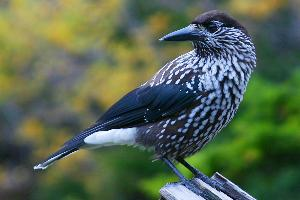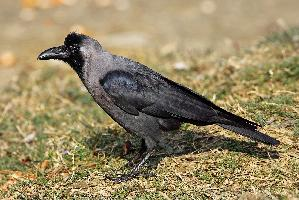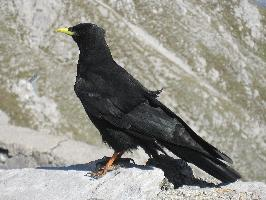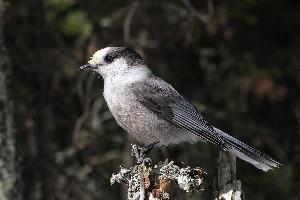
Description de l'animal
The Spotted Nutcracker (Nucifraga caryocatactes) is a fascinating avian species that belongs to the corvid family, which also includes crows, ravens, and jays. This bird is particularly known for its striking appearance and unique behaviors, especially its relationship with certain tree species for food. Native to the Palearctic region, including Europe, Asia, and parts of North Africa, the Spotted Nutcracker has adapted to a variety of forest habitats, primarily those dominated by coniferous trees such as pines, spruces, and larches.Physical Description:
The Spotted Nutcracker is a medium-sized bird, typically measuring between 32 to 38 centimeters in length, with a wingspan that can reach up to 53 centimeters. It has a robust build, with a powerful beak that is adept at cracking open hard-shelled nuts, which are a staple of its diet. The plumage of this bird is predominantly dark brown, speckled with white spots and streaks that give it a distinctive appearance. The tail and flight feathers exhibit a contrasting pattern of white and dark markings, which are particularly noticeable during flight. The eyes are sharp and dark, and the legs are sturdy and dark grey, enabling it to navigate through the branches of trees with ease.
Habitat and Distribution:
Spotted Nutcrackers are found across a wide range, stretching from the cold temperate forests of Scandinavia and Siberia to the mountainous regions of Europe and Asia. They are well adapted to life in dense forests, where their preferred food sources, such as the seeds of spruce, pine, and fir trees, are abundant. They exhibit a strong preference for areas with a significant presence of stone pine (Pinus cembra), as the seeds of this tree form a crucial part of their diet in certain parts of their range.
Diet and Foraging Behavior:
The diet of the Spotted Nutcracker is primarily composed of nuts and seeds, particularly those of coniferous trees. They are known for their remarkable ability to extract seeds from cones, which they accomplish by using their strong beaks to crack open the cones or nuts. In addition to nuts and seeds, they also consume a variety of insects, small invertebrates, and occasionally small vertebrates and eggs. The Spotted Nutcracker exhibits a fascinating behavior known as caching, where it stores surplus food in various hiding places within its territory. This behavior ensures a food supply during the winter months when resources are scarce.
Breeding and Social Behavior:
The Spotted Nutcracker is generally monogamous, with pairs forming strong bonds. The nesting season begins in early spring, with nests typically constructed high in the coniferous trees. The nests are made of twigs and lined with softer materials such as moss and hair. Females lay between 2 to 4 eggs, which are incubated for about 18 days. Both parents are involved in the care of the young, which fledge approximately 21 to 23 days after hatching.
Conservation Status:
Currently, the Spotted Nutcracker is classified as Least Concern by the International Union for Conservation of Nature (IUCN). While its population is stable in many parts of its range, it faces threats from habitat destruction and fragmentation, particularly in areas where forest management practices reduce the availability of its key food sources.
In conclusion, the Spotted Nutcracker is a unique and intriguing species, with a combination of physical adaptations and behaviors that enable it to thrive in its forested habitats. Its relationship with coniferous trees, particularly through the act of caching seeds, plays a crucial role in the ecosystem, as it aids in the dispersal of tree seeds, contributing to forest regeneration and biodiversity.
Carte de répartition

Animaux similaires
Nouvelles photos d'animaux
Top 10 des animaux
- Dolphin gull (Leucophaeus scoresbii)
- Diana monkey (Cercopithecus diana)
- Moustached guenon (Cercopithecus cephus)
- Galápagos tortoise (Geochelone nigra complex)
- Japanese macaque (Macaca fuscata)
- Russian tortoise (Testudo horsfieldii)
- Stone loach (Barbatula barbatula)
- Greek tortoise (Testudo graeca)
- Common flying dragon (Draco volans)
- Vendace (Coregonus albula)


